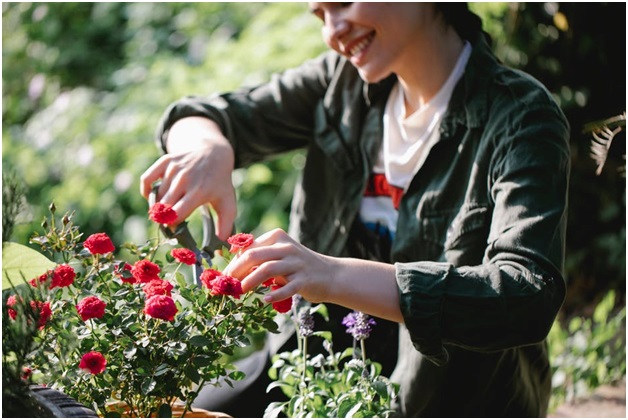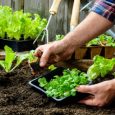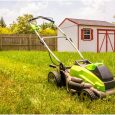Not since the war-time victory garden boom has the art of growing your own been more popular in America. People are ordering more gardening tools, soil, and supplies online than ever before. Seed companies are breaking decades-old sales records or selling out of stock.
There’s a sense of urgency about lawn and garden care at this time of year. With America’s massive range of climates, what you might be dealing with in your garden each spring differs from state to state. But there are some universal seasonal to-dos any amateur horticulturist needs to tick off the list.

Below, we take you through the steps you need to take to get spring garden-ready.
Check Your Tools
If you have a greenhouse, it’s time to clean it. Wash the glass and remove moss buildup with a biodegradable detergent to let in more light and reduce disease and pests. Sweep out the floor and clean any planters leftover from last year.
Garden tools don’t come cheap, so it’s essential to keep them well maintained. Sharpen and wash your bladed tools to ensure clean cuts when pruning, and grease the hinges. Clean and oil your hand tools like spades, trowels, even rakes.
The grass on your lawn will be springing back into action fast, so make sure your lawnmower is running well.
A few tasks to check include:
- Installing a new air filter
- Cleaning the undercarriage and carburetor
- Replacing the spark plug
- Greasing the fittings
- Sharpening the cutting blades
If you own a string trimmer or leaf blower, give those a once over, too. If you need to get any new parts, save money by shopping at spring cleaning sales or using a Home Depot coupon generator.
Rake, Weed, Trim, and Tidy
In the garden, take off any frost protection you laid down over your beds through the winter and any wraps from trees or landscape plants. Remove stakes from young trees that are more than a year old.
When it comes to working on your lawn in the growing season, be sure to wait until you have a few dry days. Melting snow or rainy winter weather will create a muddy yard, and walking on it too early can damage the growing grass.
Get that rake out and clear the lawn and garden of dead leaves, though keep leaves around the base of large trees for a natural mulch. This will make things easier for the new spring growth and open up the garden to sunlight. Water your perennial plants and add an inch or two of mulch around the base to protect their roots.
While many plants are getting ready to bloom now, the end of winter to early spring is the best time to deadhead and cut back your late summer flowering shrubs. While you’re at it, look carefully at all your trees and shrubs for any signs of winter damage. Remove snapped or weather-ravaged branches.
Finally, carefully check your lawn and garden for weeds. If you don’t get them in check now, they’ll take off once the weather warms. If you use pre-emergent herbicide, apply it now.
Feed Me, Seymour!
Composting is one of the best ways to save money in the garden. Not only can you create your own fertilizer for free, but you’ll also have a cheap source of homemade soil. So get that compost area prepared now.
If you’re handy, you can build your own bin. Otherwise, there are a plethora of ready-made choices you can buy. When adding to your compost, mix equal amounts of grass clipping, prunings, and leaves with organic kitchen waste. Turn the compost with a rake or spade every month.
Getting lawn ready is just as easy! Apply a slow-release fertilizer in the spring to add the vital nutrients lost over the winter back into the soil. Look for a fertilizer with a 20-5-10 mix of nitrogen, phosphate, and potassium, and reapply every six or eight weeks.
Plan Before You Plant
To ensure a healthy landscape, get out and edge those beds using a manual or power edger. It will create a neater-looking garden and lawn, retain moisture and mulch (both much needed as the weather warms into the summer), and prevent border weeds.
Next, plan out your annual plantings, as well as any new perennials you might want to add to your growing collection. Get your hands on a printed planting calendar or consult a reliable online version, like The Old Farmer’s Almanac. Most sort the planting dates by state since the planting zones vary wildly across America.
And don’t forget to include your local wildlife in your planting plan, too. Just as humans are waking out of their winter slumber, so too are the animals, birds, and insects. Incorporate beneficial wildlife plants native to your zone to keep the butterflies and bees fed and supply the birds with spring nesting material.
Get Your Hands Dirty
It’s finally time to start digging and growing plants!
Some vegetables like peppers, eggplants, and broccoli need a long growing season, so get them in the ground as soon as possible. Ideally, you would have already started them as seedlings indoors or in a heated propagator.
Check over your lawn for any bare patches and treat these areas now. Loosen the soil with a rake, sprinkle with lawn repair seed mix, gently rake the seeds back into the loose dirt, and water. If you have a problem with birds eating your grass seed, cover the area lightly with some hay or straw.
So long as the weather continues to warm, your new lawn should start sprouting in as little as two weeks.
Ongoing Lawn and Garden Care
In some parts of the USA, the summer can get very hot and dry. Prepare for less abundant lawn and garden care times by installing a rainwater harvesting system in the spring, when most of the rain falls. And when it comes time for the first few mows of the season, set your lawnmower to the highest setting.
Are you ready to learn more about gardening? Read the other articles in our Garden and Outdoor section.




